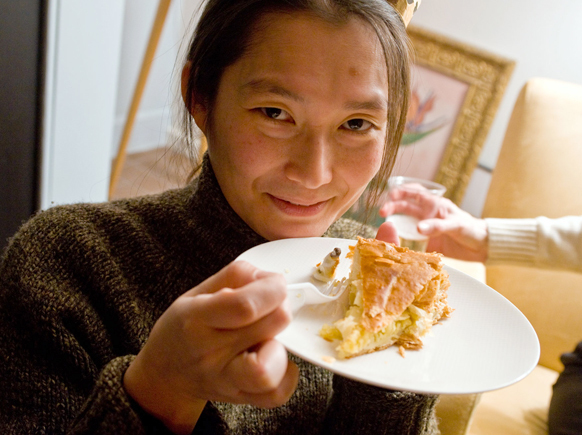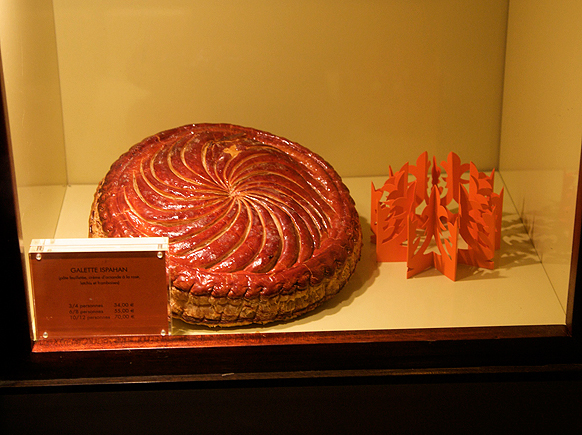Let them eat cake…carefully
The object of desire is the fève, a special good-luck charm.
You find it during consumption of French galettes des rois, which takes place on January 6 (or the first Sunday of that month) every year in commemoration of Epiphany. Officially a commemoration of Jesus’ presentation to the Three Kings, les rois, the festivity is really rooted in winter solstice rites. It was during these that the Romans ate pastries containing a fève – literally, a fava bean, whose embryonic shape embodied spring and fertility.
But modern Parisians hope to find a porcelain fève in their pastry. The one who does becomes “King” or “Queen” for a day, wears a gold paper crown and makes the first toast. From the Middle Ages until the mid-19th century, the French fêve remained nothing but a bean.
Author Marie-France Boyer says china charms appeared in 1874, when German factories inundated Europe with porcelain miniatures. This fad transformed the fève into a tiny symbol of luck – making it anything from a star or shamrock to a crown or fleurs-de-lys. The oldest porcelain fèves are now highly collectible, with their own dealers, web sites, flea market dealers and even a museum (Musée de la fève in Blain, western France). In person or on eBay, Fabophiles fork over hundreds of euros for rarities.
The actual galette usually remains traditional: a round created from puff pasty and filled with fragrant almond paste. Today’s fèves, however, are a different story. They can come in almost any shape and fancier pâtissieries sometimes order “designer _fèves_”.
Parisians keep this cake in context since they know it spells the end of revels that started back in November. However, they also know it marks the start of Catholic carnival season – which will continue until Mardi Gras. So, what better reason to lift one more glass? According to the bakers’ union, few French people resist, eating fifty million slices of galette each year.
If you celebrate, do it traditionally with the famous galette from Stöhrer, founded in 1730 when Louis XV’s wife – the daughter of Poland’s king – brought the baker with her to France. They gained another royal fan in 2004, when Britain’s Queen Elizabeth visited their shop (the building is a historic landmark). Also reliable is the upscale Lenôtre. The “Best Galette in Paris” annually attracts more than 300 bakers and a win brings sales that can run into the thousands.





